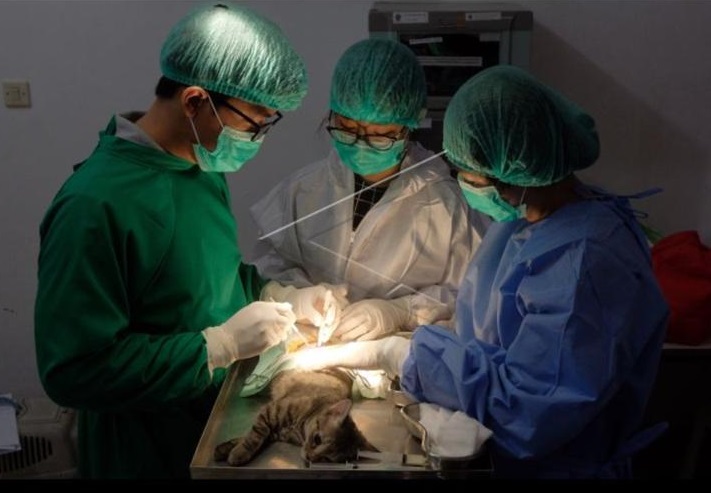A SMATTERING OF BALI PIG EXCELLENCE
30/07/2019 Views : 1363
KOMANG BUDAARSA
- A SMATTERING OF BALI PIG EXCELLENCE
Komang Budaarsa
Faculty of Animal Husbandry, Udayana University, Denpasar
Bali
Email: bdr.komang@unud.ac.id,
Hp: 08123629838
Bali can be proud of the blessing of greatness in many
aspects. The recognition for its culture and custom is uncontested. It doesn’t
stop there, Bali can be a tiny island but its endemic flora and fauna are
abundant. To name of few, bali snake-fruit (salak
Bali) and Bali orange (jeruk Bali)
(flora), and bali myna and bali cow (fauna). Another endemic fauna is the bali
pig. Bali pig is one of Indonesia germplasms, and it exists only in Bali. Its
existence in Bali is endangered since the landrace pigs break in, moreover Bali
pigs will be completely extinct if this case is not well anticipated. Bali pigs
are thought to come from China (Sus
vitatus). In accordance with the phenotype, there are two types of balinese
pigs: the first type is those found in eastern Bali, with the characteristics
of: black fur and rather coarse, curved back but the stomach doesn’t touch the
ground, and the rather long snout. The second type is those found in northern,
western, central and southern Bali with the characteristics of: curved downward
back (lordosis), large stomach, white stripes on their stomachs and on their
four legs, short snouts, erect ears, and the height of adult pig is around 54
cm, with body length of about 90 cm and tail length of between 20-25 cm.
The parent of bali pig (bangkung) has a very low stomach, and it even touches the ground when standing. The number of nipples are from 12-14, it can give birth to 12 piglets at a time. This pig is then known as bali pig. Hence, the hallmark of a bali pig is on its back, which is curved downward (lordosis). Unlike other landrace pigs (Landrace, duroc, largewhite, etc.), their back are curved upward like a bow.


bali pig with
white stripes (left) and black (right) are semi-intensively domesticated.
Genetically, bali pigs grow slower than imported landrace breeds. It takes
10-12 months to reach 90-100 kg in weight, while imported landrace pigs only take 5-6
months
to do so. This imported landrace pig is a serious competitor to bali pigs. The blame is not on the breeder in which they definitely want to sell the pigs quickly, and
make a profit
out of them. Nevertheless, in several locations in Bali,
thankfully, the farmers are still bearing up in raising bali pigs.
Bali Pig Excellence
Despite its shortcomings, bali pigs show
positive peculiarities which are capable to survive even if
they are fed minimally, more resistant to various diseases, adapting to the environment
more quickly especially to extreme environments, and drinking less
water making
them suitable for breeding in dry areas.
At present, bali pig population in Bali is widely
spread in dry areas including Kubu Karangasem District, Nusa Penida District,
Klungkung and Gerokgak Buleleng District. Most of the bali pig breeders are
underpriviledged, and
providing for themselves i.e. buying rice for their daily meals is already difficult let alone buying concentrate
for pigs.
In West Tianyar Village and Seraya
Karangasem Village, there are many people who are still raising bali pigs
because these areas are indeed dry. The breeders give bali pig a term dadi ajak lacur (can be asked to suffer)
meaning that providing bali pigs with concentrate is not a must just like
Landrace pigs or other breeds, instead improvised food which is generally
kitchen waste, can still make them survive.
These beneficial abilities of bali pigs should be made as consideration when the government plan to help poor families. The house renovation program by provincial government of Bali along with the aid of pigs as cattle in dry areas should prefer bali pigs as a choice. As the reason for this is its helpful ability to adapt to dry environment, the preservation are carried out indirectly.
